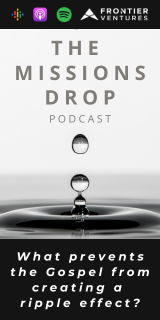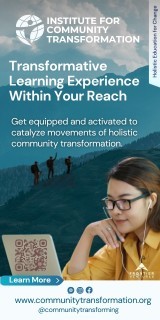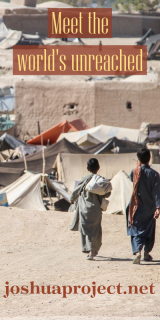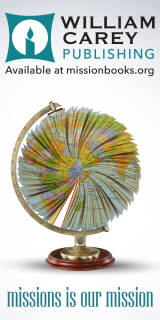Rich Soil for Spiritual Innovation

Imagine the scene: we’re at the final interview for an Executive Director role of a 100-year-old ministry. The Board has just offered the position to us, but the Board Chair shared a caveat, “Do not say yes to this position unless you are 100% sure you’ve heard from God that He wants you to accept this role.”
It was clear in the interviews that the ministry, with ten acres of land and five buildings, had struggled financially. It was at a crossroads and needed new innovative initiatives to help it move forward sustainably. The question of hearing from God is not new for any of us, so, after compelling evidence through prayer and discernment, we decided to jump in headfirst into a context that needed a new approach of thinking and living—and to our surprise—it came partially through the son of a Tasmanian fisherman who first coined the phrase “permaculture” (“permanent agriculture”). In fact, we had heard about permaculture from a close friend who was planning to farm an acre on our property and had just completed a course on permaculture. For academic purposes, permaculture is “the conscious design and maintenance of agriculturally productive systems which have the diversity, stability, and resilience of natural ecosystems. It is the harmonious integration of the landscape with people providing their food, energy, shelter and other material and non-material needs in a sustainable way” (What Is Permaculture ?, n.d.). “Permies,” as they are often called, preach of “working with, rather than against, nature” and of engaging in “protracted and thoughtful observation, rather than protracted and thoughtless labor.”
For our purposes, permaculture principles gave us a new framework to imagine and live out God’s creative genius on our campus. In fact, how we interpreted permaculture was certainly not the original intent of those who developed the concept. However, when we reflected on the principles and what we could learn from them, we began envisioning deep design parallels with biblical stories and the values of our mission. As we prayed and interacted with our team, community, and friends that included people from around the world who live and study on our campus, inside and outside our faith tradition, it was clear God was calling us to something different, something more organic and natural in a permaculture sort of way.
We see connections between innovation and spirituality woven into our context where we intentionally engage with people of other faiths in our community. Our mission is to welcome people from around the world to live and study on our campus. In fact, we frequently have a dozen or more nationalities living in the International House, with another dozen studying in our newly- accredited academic English program.
Our campus has been a place of refuge for orphans, troubled teens and international students (in that order) for over 100 years. God has been orchestrating symbiotic activities that have thrived here throughout that time. As we prayed and discerned, we began to dream about how thriving could occur once again on this property while reflecting on the permaculture principles we were applying to our land and work. Permaculture has 12 main principles that aligned loosely with our mission to care for people, community and creation. For sake of brevity, below we’ll share just five of the permaculture principles with related stories.
Permaculture Principle 1: Observe and Interact
This principle emphasizes being observant to what is around us. So, we spent months in a design and innovation discernment process, walking our property, sitting quietly on campus, and interacting with friends, neighbors, students and residents while observing our natural and ministry context. We began seeing the organic around us taking shape—we just needed to cultivate the cross-pollination and co-supporting activities while recognizing the gifts we already had in the living things and components all around us. In fact, the web of cross -pollination seemed endless as our gardening, composting, continuing education offerings and prayer garden with a pond all naturally nurtured to another in our community. This also helped us relax into a posture more of observing “what is God doing” rather than “what do we have to do to make something happen.” That isn’t to say that we didn’t (and still don’t) nurture projects and keep them movingn forward or need great patience when there is a lull in activity, but I guess you could say we’ve also become more participant observers in planning for kingdom results in our ministry.
Permaculture Principle 2: Catch and Store Energy
This principle suggests there are energy and resources that, if given the opportunity to grow, could also be valued, treasured and stored for continued use. The ideas that were generated during the discernment process were seeds ready to sprout to life. Many ideas were easily transferable, like catching rainwater for use in our garden. Others involved more time to mature, like making space for community life on the half-acre adjacent to our international house. So we involved all acting participants, harvesting the feedback from those who lived here, visited here, worked here or lived nearby while taking the time to discern which of their ideas to launch as prototypes of projects that had potential—that may or may not fail. In these ways we thought that we could “catch and store” energy that could take root over time and recycle itself in exciting symbiotic ways on our campus. Our mission and commitment to People Care, Community Care and Creation Care was stored perennial energy waiting to fulfill multiple functions toward sustainability.
Permaculture Principle 8: Integrate Rather than Segregate, a Reflection on Care of Community
This principle values collaboration and cooperation of a variety of community players. Obviously, every person who comes to our campus is already part of a community they left. But, when they arrive here, we are pleasantly challenged to care for them individually because we live in close proximity. This gets played out in very tangible ways. While Miriam was here visiting from Egypt, she was wrestling with a major decision. Knowing our spiritual inclination, and having gotten to know us through shared meals, she chose to seek out our advice. Also, being a business major, she learned of a local business employing local refugees that one of our board members owns. Miriam was excited by the coaching times she received, and the practical learning experiences gained. She also loved to see the surrounding community come on campus for our monthly farmer’s market and asked to sell some of her native food. She did quite well at the market and gave all her proceeds back to our ministry, which was used to purchase a book to teach the Enneagram to students who came the following year.
Permaculture Principle 11: Use Edges and Value the Marginal, a Reflection of Care for People
We related this principle to Jesus’ ministry, specifically who he was attracted to and who he cared for. Another master’s level student named Sarah from South Africa, who was studying at the nearby university, came and brought great energy to our small campus. We had many thoughtful spiritual conversations with her. She attended our house church and later met with a staff member for further clarification of the conversation. A large church in the area which loves serving our residents took her and other students on a kayak trip. This greatly facilitated her sense of belonging with the broader community. Once when we were tutoring high school students from Nepal in the dining room of the house, she walked through after classes and asked what we were doing. When I told her, she excitedly offered to help out once a week. The students loved being tutored by her.
Permaculture Principle 12: Creatively Use and Respond to Change, a Reflection on Care of Creation
And finally, a story about stewarding and caring for our property which demonstrates in a practical, welcoming way our love of creation and the invitation to others to experience God in the space. There had been a small pond and garden that disappeared in the overgrowth some years ago. After a local business dedicated a workday on campus, the pond was cleaned out. This gave us the inspiration we needed as a staff to weed and plant flowers. Residents and local neighbors were invited to join us. Slowly, a prayer garden was formed. Now, locals who walk by are invited to sit on the benches along the winding path to rest. The small sign leading the way reads, “welcome to all who seek peace.”
We also hope that they will feel welcome to join us for a cup of coffee at our pop-up café on Fridays.
This pop-up café is an example of learning through prototyping and moving from one iteration to another. We found that this weekly café became more successful when we tried mixing it into our monthly farmer’s market. Integrating the café into the narrative of our monthly events gives the community a connection point and invitation to stop by and join us weekly.
As you can see, we have been captivated by permaculture design, which we interpreted for our context as a unified and multi-dimensional ecosystem working symbiotically within our mission.








comments